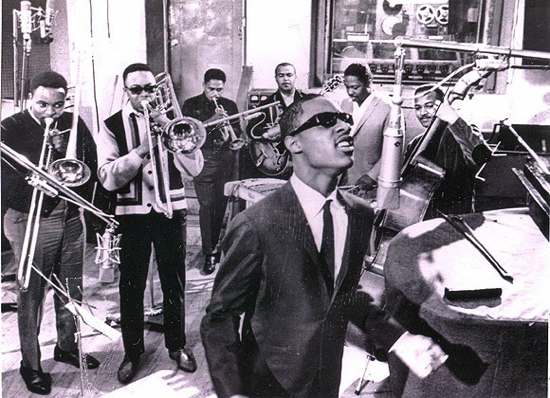In 1965 Stevie Wonder was performing in Paris when he reached over, grabbed a bandmate’s tambourine and started playing. The instrument belonged to Jack Ashford, whose percussion talent, particularly with the tambourine, is heard on hits like Marvin Gaye’s rendition of “I Heard it Through the Grapevine” and the Supremes‘ version of “You Can’t Hurry Love.”
But Wonder got so carried away that he accidentally put his fist right through it. “Stevie said, ‘You can have my harmonica until I buy you another tambourine,'” says Ashford. “I still have that harmonica and that was 40-some years ago.”
Ashford was a founding member of the Funk Brothers, who provided the background music at Motown Records. The Motown label was responsible for producing countless hits, including Wonder’s early songs.
Visitors at this year’s Capital Ex can see that harmonica in a collection of memorabilia that Ashford is displaying from from his 10 years of playing with the likes of the Temptations, the Jackson Five, the Miracles and others. He’ll also be performing on the weekends during Capital Ex.
“Almost 90 per cent of the world thought that all those songs were done by the individual performers’ bands,” says the two-time Grammy winner and recipient of its Lifetime Achievement Award. “No, no, no, it was 12 guys in Detroit in a place we called the Snakepit.”
The Snakepit was the basement of Hitsville USA, a.k.a. the Motown recording studio, back when the powerhouse consisted of two small houses owned by Berry Gordy Jr.
Outside the Snakepit, the room with tile walls and wood floor was more formally known as Studio A, where producers gave the Funk Brothers a chord sheet and the tempo of a song. And from that, the group would develop its signature guitar riffs like those heard on “My Girl,” and all the background that made up the unmistakable Motown sound.
“When you’re making history you don’t know it, because you’re living it. We had no idea that it would end up like it did,” says Ashford. “It was a crackers-and-soup type atmosphere [at first.] No money around.” In fact, the receptionist occasionally cooked chili for the crew.
